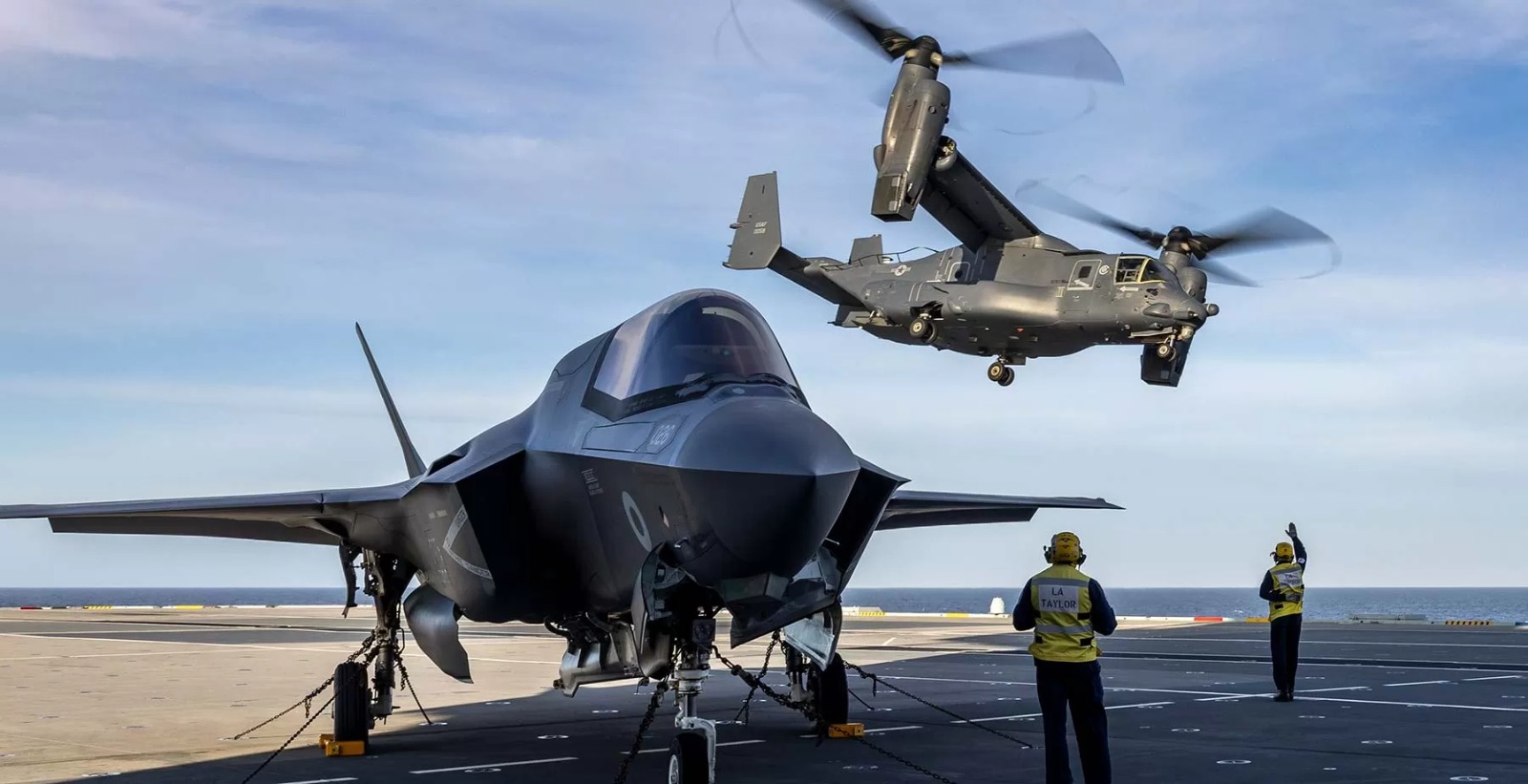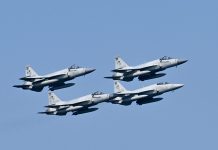F-35B fifth-generation fighter jets, taking off from the British aircraft carrier HMS Queen Elizabeth, have recently performed live Paveway IV precision-guided bomb drops at Swedish weapons testing ranges.
MQ-20 Avenger: As Drone Race Heats-Up, US Tests Aerial Recovery System For Mid-Air UAV Launch & Retrieval
The United Kingdom Carrier Strike Group, led by Commodore James Blackmore Royal Navy (COMUKCSG), was announced on October 11, although the operation occurred last week.
The Carrier Strike Group (CSG) also shared images of Paveway IV precision-guided bombs on its official X account, previously known as Twitter.
However, the United Kingdom did not disclose extensive details about this activity. The British aircraft carrier and its F-35 Lightning II stealth fighters are currently spearheading a multinational flotilla of warships in the northern European waters.
The carrier recently wrapped up the first phase of its autumn deployment, which included simulated missions conducted in the North Sea and Norwegian Sea.
Last week F-35Bs from the UK Carrier Strike Group employed live Paveway IV precision-guided bombs in Swedish test ranges.
Weighing 500lbs, Paveway IV uses laser and GPS technology to accurately Strike targets ashore.
Thanks to @Forsvarsmakten 🇸🇪 #JEFtogether #UKCSG23 pic.twitter.com/wJWqWKgMFn
— UK Carrier Strike Group (@COMUKCSG) October 11, 2023
During the first phase, fighter jets from the carrier were engaged in COBRA WARRIOR 23-2, the Royal Air Force’s most extensive annual exercise, held from September 4 to 22.
This multinational exercise featured over 50 aircraft from Canada, the USA, Italy, Norway, Australia, and the UK, all collaborating to assist a fictional nation in its quest to reclaim sovereignty.
Different units were assigned different missions, ranging from target destruction to aircrew rescue operations.
The F-35s were specifically responsible for conducting missions to suppress enemy air defenses (SEAD), identify and eliminate surface-to-air threats, lead the way for other jets during strikes, and provide close air support to deter potential hostile fighters.

On September 13, an F-35 aircraft with the callsign “GHOST11” operating from the carrier encountered a technical problem, necessitating a precautionary diversion to Newcastle Airport.
Following a safe landing, the aircraft underwent a thorough inspection by 617 squadron engineers. It was successfully cleared for take-off and rejoined the carrier on September 16.
Currently, the UK’s aircraft carrier is working alongside ships and personnel from Joint Expeditionary Force (JEF) member nations, a highly prepared task force committed to regional security and capable of responding to crises in tandem with or independently of NATO.
In addition to the UK, the JEF comprises other member nations, namely Denmark, Estonia, Finland, Latvia, Lithuania, the Netherlands, Norway, and Sweden. HMS Queen Elizabeth and the JEF nations are demonstrating their proficiency in conducting air operations into Norway, Sweden, and Finland.
Paveway IV Precision-Guided Bomb
Paveway IV, a precision-guided bomb, is the outcome of a collaboration between Raytheon’s British and US divisions, initially developed for the Royal Air Force (RAF).
While the assembly of the bomb takes place in the United States, it relies on components supplied by British companies, including Raytheon UK, Portsmouth Aviation, and Thales UK.
Since its operational introduction in 2008, Paveway IV has proven to be an advanced and exact weapon. It has been utilized in various military operations, including missions in Libya and against the Islamic State (IS) in Iraq and Syria.
As stated in the latest tweet by the UK Carrier Strike Group, Paveway IV weighs 500 lbs and uses a combination of laser and GPS technology for precise target strikes.
This state-of-the-art guided bomb is versatile and can effectively strike most of the RAF’s potential target scenarios, making it the primary choice for precision strikes.

Air Power expert Justin Bronk previously highlighted the flexibility of the Paveway IV guided bomb, which operates in dual modes – laser or GPS-guided. This adaptability allows for various options in terms of fusing, approach angles, and deployment, making it suitable for counter-insurgency and semi-permissive scenarios. However, it necessitates getting relatively close to the target for a successful drop.
The Paveway comprises four main components: a guidance system at the front, a 500lb warhead in the middle capable of penetrating concrete, and the tail section at the back, which guides the bomb. A smart fuse controls the detonation process.
The Paveway IV bomb employs two distinct methods for precision guidance. Firstly, it can utilize GPS technology, where, upon release, the aircraft provides the bomb with target coordinates based on its positional data. The bomb can then interface with GPS satellite signals, allowing it to autonomously navigate to an exact grid reference.
Furthermore, the Paveway IV can also be laser-guided. In this mode, a laser beam marked with a specific code is emitted, and the bomb is programmed to seek out the reflected energy from the laser spot projected onto the target. It then relies on this laser-guided marker to accurately hit the target.
- Contact the author at ashishmichel(at)gmail.com
- Follow EurAsian Times on Google News




